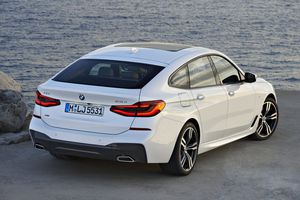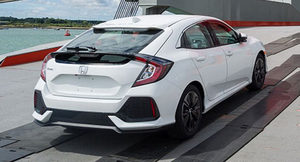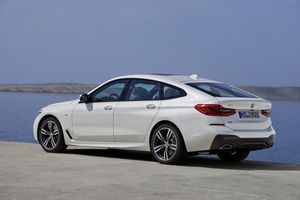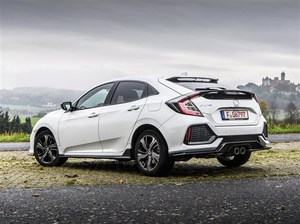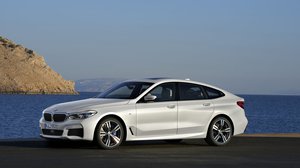July 1, 2017
June 30, 2017
BMW vs Honda: Side, humpback battle 3 of 4
June 28, 2017
BMW vs Honda: Front, humpback battle 2 of 4
June 26, 2017
BMW vs Honda: humpback battle 1 of 4
BMW 640i xdrive GrandTurismo vs Honda Civic hatachback
Ghosts of the Saab wagonback return.
BMW vs Honda: Front, humpback battle 2 of 4
BMW vs Honda: Side, humpback battle 3 of 4
BMW vs Honda: Rear, humpback battle 4 of 4
July 10, 2016
Autodesign, 1980 - 2010, four-door fastback 'coupe'
BMW will sell you an X6 "coupe" which, properly speaking, should be called the X6-11 because it looks exactly like a Citation X-11 with the nose from a Pontiac Grand Am welded on as an afterthought.
In retrospect, it's fairly obvious why somebody would trade in a '79 Granada for an '84 Accord: You got twice the gas mileage and more than twice the longevity at virtually no cost in usable interior room. That's a practical, sensible decision.
It's not nearly as easy to understand why someone would trade a 2011 Accord for a 2016 Pilot or CR-V. There's a substantial price penalty to be paid for the "upgrade" to a crossover or SUV. Fuel economy suffers. Tires and brakes wear out quicker and cost more to replace. The handling of any lifted vehicle is always much, much worse than that of the car from which it's derived. Look at it this way: If you knew with absolute certainty that your morning commute tomorrow would feature a flatbed losing its cargo on the road ahead of you, scattering cars and trucks in every which direction while you tried to steer and brake your way to safety, would you rather be driving a Camry or a Highlander? A BMW 530i or a BMW X5? A Porsche Cayman, or a Cayenne?
To choose a crossover instead of a car is to willingly give back virtually all of the advances that American buyers gained when they went from Granadas to Accords. And what do you get in return? It can't be that customers demand all-wheel-drive; that was offered in everything from the Camry to the Tempo back in the Nineties and very few people stepped up to pay the extra money. Most of the "SUVs" I see on the freeway nowadays have an empty hole where the (optional) rear differential would go anyway.
-- Jack Baruth has won races on four different kinds of bicycles and in seven different kinds of cars. Everything he writes should probably come with a trigger warning.
April 4, 2016
Inventory management 2
BMW regularly pays dealers to buy cars and keep them as demonstration models or lend them to customers who are having their vehicles serviced.
But several years ago, BMW created a category in its sales reporting system called Specialty 8, according to communications between BMW and its dealers. These vehicles are counted as sold for BMW's monthly total, but remain on the lot and continue to be offered as new cars, the dealers said. BMW typically pays the dealer $1,000 to $3,000 for each Specialty 8 car marked as sold.
On Thursday, the day before monthly sales are reported on Friday, BMW made a one-day offer to dealers to entice them to buy cars for loaner fleets. A BMW spokesman, Kenn Sparks, confirmed that Specialty 8 was a "subcategory" for sales of vehicles used as demonstrator models and test drives.
Previously: Self dealing car dealers make sales
